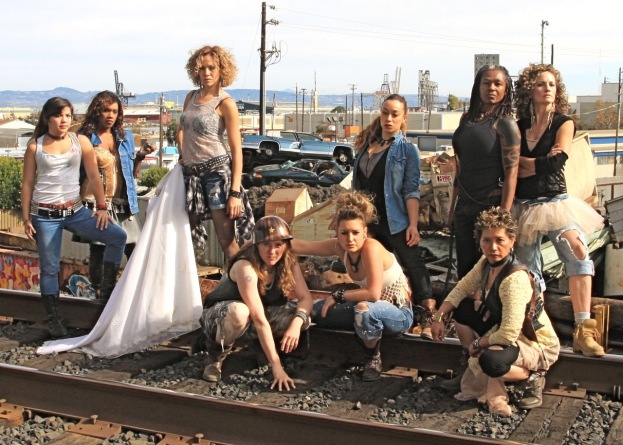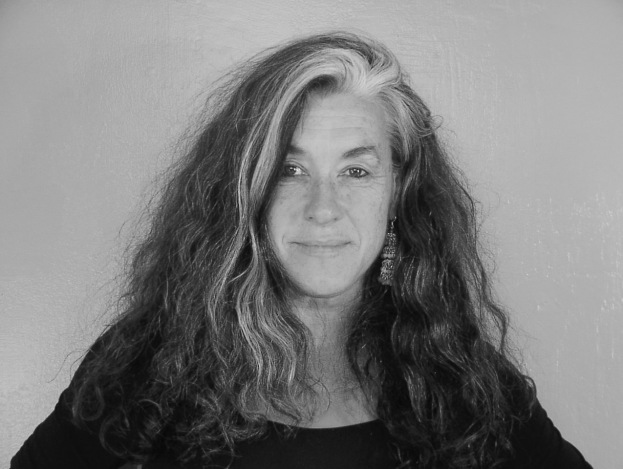
In 1984, Krissy Keefer and Nina Fichter founded Dance Brigade to create and perform dance-theater that addresses the complex problems of contemporary American women. Prior, Krissy co-founded the Wallflower Order in the 1970’s as the nation’s first feminist dance company. I had the honor of speaking with Krissy about the personal and national impact of her work.
Emmaly Wiederholt: Prior to the Wallflower Order, what was your dance experience, and how did it lead you to understanding that dance could be political?
Krissy Keefer: I trained in ballet from the time I was six years old. My mother was a dancer and used to teach classes. I trained very seriously in ballet until I was 14. I danced with Columbia City Ballet and Cincinnati Ballet. Then I switched to modern in high school. In college, I was a dance major, and a loose group of us who danced together started the Eugene Dance Collective. Out of that came the Wallflower Order.
In the 60’s and early 70’s, everything was political. I took a Women in Literature class in college and choreographed to some poems by Marge Piercy and Joyce Carol Oates. That was the beginning. Then when we started Wallflower we were embedded in the women’s movement. Laurel Near was in the group and her sister Holly Near was a political singer, so we were really encouraged to be political. It all just took off from there.

EW: What was the genesis for Dance Brigade?
KK: Dance Brigade began as the Wallflower Order Dance Collective, which started in 1975 in Eugene, Oregon. It was a women’s collective that toured all over the United States, Europe and Latin America for nine years. We had a political fight and broke up, and out of that Nina Fichter and I started Dance Brigade in San Francisco.
When the Wallflower Order broke up, Nina and I were on the same side, not necessarily ideologically but emotionally. We wanted to keep going; we weren’t done choreographing and making community work. So we started Dance Brigade.
EW: Can you speak to the activist bent of Dance Brigade?
KK: Wallflower was a women’s dance collective. We were probably the first dance company to respond to the large lesbian nation across the United States. Feminism and women’s power were the basis. We moved into much more diverse politics, including class and race. Dance Brigade was founded to continue that mission.
The women’s movement was definitely the foundation of our work. However, Wallflower toured extensively, whereas Dance Brigade has ‘stayed home.’ We decided to produce local events, including The Revolutionary Nutcracker Sweetie and Furious Feet Festival for Social Change. We really tried to integrate ourselves into the larger Bay Area.
EW: What are some of your personal highlights?
KK: Well it’s been a whole life. I was 22 when Wallflower started. I was able to manifest myself as an artist because of this national network of women production companies. We had a crossover aspect because we were good at what we did. I’ve been able to combine how I make a living with my politics. Not many people get to do that, especially artists. People tell me they have their politics, their art, and their job, but they’re not mixed. That’s been my personal highlight: my life.
EW: What are the greatest challenges and hurdles you’ve faced?
KK: Money. It’s the feeling that the amount of work I do doesn’t register with funders. That’s not just me though, that’s everybody. You have to fight for the money and resources every step of the way, and it gets exhausting.
Within a collective, there grows a lot of rancor and in-fighting. Wallflower had a big breakup which was very public, and that was painful.
You have to take the bitter with the delicious. I think about all the artists I’ve been able to collaborate with over the years. It’s a whole community of artists I can call my own.

EW: When do you feel most successful? How do you measure success?
KK: Success comes at different times in everybody’s career, and everybody has peak periods, and then they take breaks or are forced into breaks, and then they have peak periods again. Every individual has their standards about what makes a success.
Are you talking about being a successful choreographer? If you look closely, you see that most of the choreography jobs go to men. But if you don’t know that then you take it very personally and you say, ‘I’m not a good choreographer because I don’t get hired.’ But let’s be real: people take chances with men at any age, much more than they take with women.
All of the 2015/2016 repertoire and new work for San Francisco Ballet, Joffrey Ballet and the New York City Ballet were created by men. You can check this out yourself. The evidence and writing on it is unrelenting.
[Krissy compiled the following quotes about the lack of commissioning opportunities for women:]
“It’s 14 years since a woman was commissioned to create a main-stage ballet at the Royal Opera House. If this were true of women playwrights at the National Theatre, or female artists at the Tate, there would be outrage. But at the flagship institution of British dance, the omission has escaped public notice. As it did last summer when the Royal Ballet and the National Gallery launched a collaboration named Metamorphosis: Titian 2012. Of the 15 artists and choreographers involved, none was a woman. An ironic decision, given that the subject was the goddess Diana, the personification of feminine power.” Luke Jennings UK Guardian 2013
And from Sharon Basco’s 2015 article in ARTery:
“Really? Have you noticed?” (Twyla) Tharp said. “And how many famous painters, philosophers, musicians, some writers — it’s not a woman’s prerogative to be an artist. We all know women have a high hill to climb whatever they do, and the world of arts is very chauvinistic, and one knows that going in.”
It’s not just in the U.S. that men lead and choreograph the ballet troupes. “The world class companies, for the most part, are run by men,” said Lynn Garafola, a writer, scholar and founder of the Columbia University seminar Studies in Dance. And why are women leaders gone? “The more professional a company becomes, in my observation, the more likely women are going to disappear from the leadership positions, and they’re going to be replaced by men. I think this is very typical of organizations when they get larger, when they get more important.”
KK: Then there’s people who make brilliant work but don’t have any money to make their next piece because they don’t have a business model. They’re floundering financially all the time. Then you have others who are very good at business and create an empire in order to support their work. There’s a gaze on them that says they’re successful, but they spend 75 percent of their time monitoring their building and business, so they see the independent artist as more successful.
So I guess you have to look at what influence you have. I base my success on my influence. I do feel like I’ve forged a path and brought a lot of people along. To me, that’s successful.
EW: What difference do you perceive Dance Brigade has made?
KK: I was at a panel discussion recently with Keith Hennessey and Sara Shelton Mann, and Keith actually contextualized us brilliantly. He said, ‘They changed the face of dance for many.’ Which we did.
This is what Keith said:
Krissy was part of a collective of women that started a company in the mid 70’s called the Wallflower Order, which basically changed the face of dance for many of us, of what we grew into, those of us who really started working in the 80’s. Some of the lay of the land had been set up about what was possible for political dance, what was possible for the merging of all forms into one kind of thing. The Wallflowers did in 1975.
Then in the early 80’s that company split apart and multiple pieces were made, but the only enduring project to really
grow and continue from it was the Dance Brigade, which was started by Krissy and her longtime collaborator and partner Nina Fichter, and that led to the creation of Dance Mission Space at 24th and Mission – a very vibrant, multicultural, dance space – 18 years ago.
And looking at spaces in San Francisco, one of the reasons why my next project will premiere there and not somewhere else is because it’s the only space where there is a contemporary/modern dance audience that is not the only dominant audience of the space, but where it’s actually, truly multicultural, with many people who aren’t white, who really see that as their space in the way that spaces get marked, and that is part of a long term politic of Krissy and the people she’s worked with. That’s just a little piece of history about Krissy…

KK: Dance Brigade and the Wallflower Order gave permission to a lot of artists with specific politics by bringing lesbianism into the modern dance world by name. All those things are transformative.
EW: I’ve heard that Dance Brigade’s home – Dance Mission – is jeopardized. Is that true?
KK: That’s the truth. We don’t have a lease, and the landlord is raising the rent every year. It’s not just about us though; it’s about the face of the Bay Area changing and who’s got access to the real estate. It’s not a new story, but it’s so overwhelming we’re all mind-boggled and reeling.
Krissy Keefer co-founded Dance Brigade in 1984 with Nina Fichter. They reside at Dance Mission Theater, where they operate a 140-seat theater, dance studios, adult and youth classes, Grrrl Brigade and produce groundbreaking eventsice.
This article apppeared in the May 2016 issue of In Dance.


